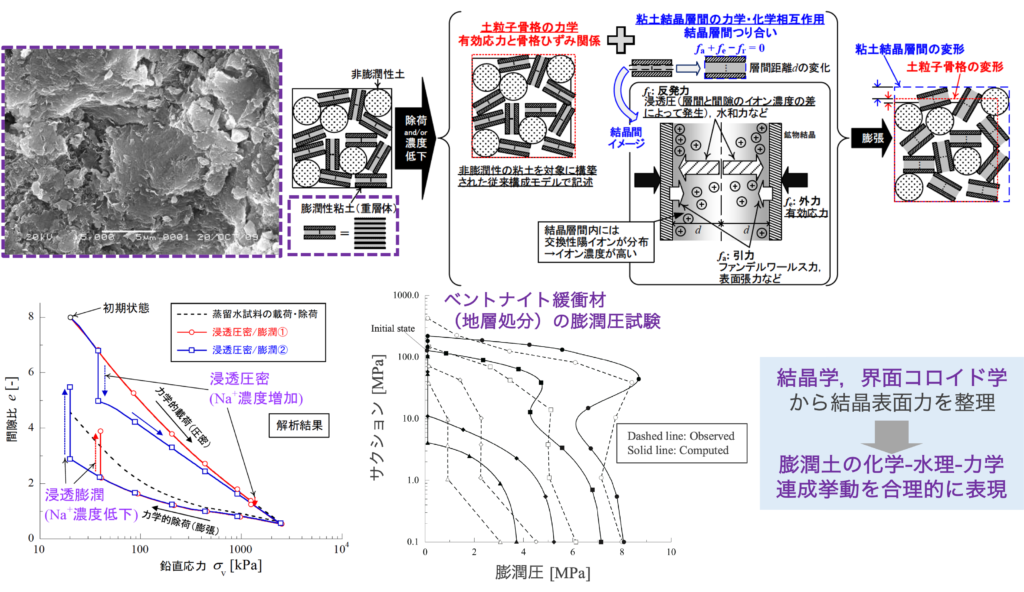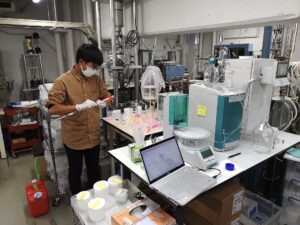Constitutive modeling of expansive soils considering the surface phenomena of mineral crystals

Swelling clays are widely found throughout the world, and are also widely distributed in Japan, mainly in strata from the Neogene period onward. On the other hand, bentonite, a typical swelling clay, is a candidate buffer material for radioactive waste disposal facilities. However, swelling clays are considered as special soils for which no design method is available.
In this study, the deformation of swelling clay, a mixture of layered minerals, is described as the sum of "deformation of the soil particle skeleton" and "change between mineral crystal layers. The former is represented by a general mechanical model that describes the behavior of sand and clay, while the latter is obtained as the balance of forces acting on the mineral surface based on the knowledge of crystalline and interfacial colloidology.
The model reasonably reproduces the coupled chemical-hydrological-mechanical behavior of expansive soils, and also establishes a model framework that can be developed from both micro and macro perspectives.
Kyokawa, H., Ohno, S. and Kobayashi, I.: A method for extending a general constitutive model to consider the electro‐chemo‐mechanical phenomena of mineral crystals in expansive soils, International Journal for Numerical and Analytical Methods in Geomechanics, Vol. 44, pp. 749-771, January 2020.
Kyokawa, H.: A double structure model for hydro-mechano-chemical behavior of expansive soils based on the surface phenomena of mineral crystals, Engineering Geology, Vol. 294, December 2021.


